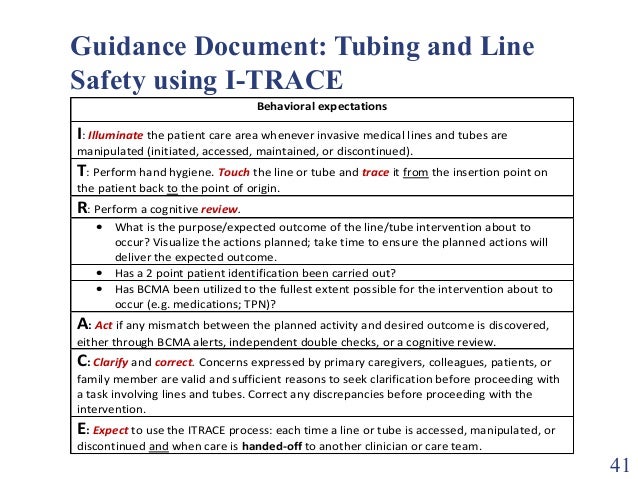

The surveyor might focus on how each of these departments assessed the patient, obtained a medical history, developed the care plan, provided treatment, and addressed issues related to infection control.

The surveyor would trace the patient’s path through the emergency department, cardiac cath area, operating room, post-anesthesia care unit, and intensive care unit. The patient had complications and ventilator-associated pneumonia. The patient went to cardiac cath, to the operating room for a CABG, and then to the intensive care unit. A three-day survey includes an average of 11 individual tracers.įor example, a surveyor might select a patient admitted to a hospital’s emergency department with cardiac disease. Each tracer takes from one hour to three hours to complete. They then move to where the patient first entered the organization, and to any areas in the organization where the patient received care. Surveyors begin the patient tracer by starting where the patient is currently located. Such activity prior to an on-site survey didn’t meet the goals of JCAHO accreditation in that it drew physicians from providing care and managing performance improvement over time. JCAHO’s evolving accreditation process represents a paradigm shift for the hospitalist, who may be more accustomed to organizations ramping up before an on-site survey. Hospitalists can help surveyors understand processes used within their healthcare organizations. Hospitalists are a vital part of the organizational structure and play a large role within the care systems. This is already an area with which hospitalists are familiar. The goal is not for the hospitalist to memorize JCAHO standards, but instead to be able to discuss patient care systems and processes. This type of interaction, coupled with an emphasis on continual compliance with standards such as infection control and medication management (which address issues crucial to good outcomes for patients), is exactly what physicians have told JCAHO they desire from the accreditation process. In the patient tracer methodology, the surveyor selects a patient and uses that patient’s care record as a roadmap to assess and evaluate the services that the healthcare organization provides. One way surveyors look at how hospitals deliver safe, high-quality care is to interview hospitalists and other staff physicians. Surveyors use 50%-60% of their time tracing the care of randomly selected patients to learn how staff from various disciplines work together and communicate across departments to provide safe, high-quality care. By evaluating the actual delivery of care services, less time is devoted to examining written policies and procedures.


The process involves interviewing the caregivers to evaluate the quality and safety of the patient care process. The patient tracer methodology provides a framework for JCAHO surveyors to assess standards compliance and patient safety during on-site surveys. (These are particularly relevant for the hospitalist.) Patient Tracer Methodology and the Hospitalist This article explores the two major parts of this revised accreditation process: the patient tracer methodology that guides the on-site survey and the PPR, a self-assessment tool that results in corrective action plans. There is a significant focus on clinical care. The emphasis of the revised accreditation process is on how healthcare organizations normally provide care and use JCAHO standards as a framework to deliver safe care on a daily basis. Known as Shared Visions-New Pathways and implemented in 2004, this transformation of the accreditation process has shifted the emphasis from survey preparation to continuous improvement of operational systems that contribute directly to the delivery of safe, high-quality care. The new process includes revised standards, a periodic performance review (PPR), new survey techniques, and a revised decision process. The Joint Commission on Accreditation of Healthcare Organizations (JCAHO) has dramatically redesigned and improved the value of its accreditation process.


 0 kommentar(er)
0 kommentar(er)
